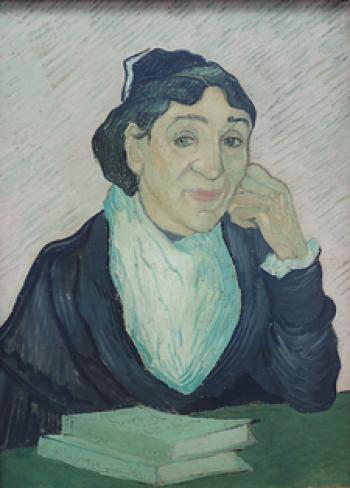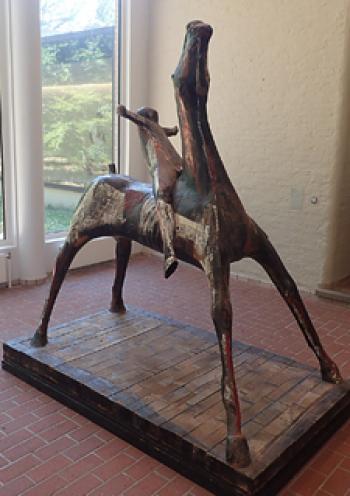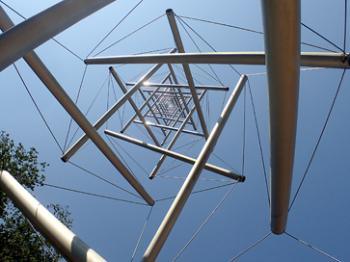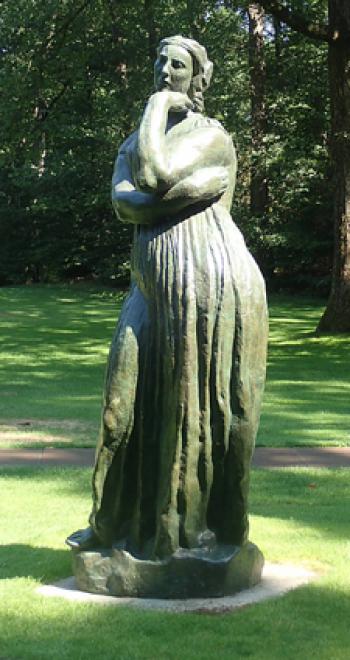Van Gogh at the Kröller-Müller
This item appears on page 29 of the January 2019 issue.
Amsterdam's Van Gogh Museum has the largest number of Vincent van Gogh's paintings, but did you know the Kröller-Müller Museum comes second? And that it would be worth a visit even without all of those van Goghs?
The Kröller-Müller Museum (krollermuller.nl/en) is rated among the world's top art museums, and on the latest trip that my wife, Kathy, and I took to the Netherlands, we finally found out why when we visited on Aug. 3, 2018.
To find this museum on a map of the Netherlands, draw a horizontal line going east from Den Haag to Utrecht. Keep going past that point and you end up in Hoge Veluwe National Park, north of Arnhem. The museum sits on its own huge, park-like property surrounded by the national park — a magical setting.
THE ORIGINS — Art lover and connoisseur Helene Müller married industrialist Anton Kröller, and, with practically unlimited funds, they set out to buy artworks, amassing almost 11,500 between 1907 and 1922. In 1938, the "house" (as she liked to call it) became a reality. It now houses about twice as many works, among them almost 90 paintings and 180 drawings by van Gogh.
The building, itself, is modern in a neutral style — timeless, airy and all on one level, never interfering with the visuals on the walls.
Outside is a huge sculpture garden that is like a maze, taking you through forested areas and bushland, where gigantic works are displayed with lots of space around them.
A Jean Dubuffet work from 1974, "Jardin d'émail" ("Garden of Enamel"), is about the size of a tennis court. An elegant metallic tower from 1968, "Needle Tower," by Kenneth Snelson, rises well above the treetops.
Most of the sculptures are modern; there are just a few "oldies," including "La grande Pénélope" (1912), by Émile-Antoine Bourdelle; "l'Air"(1939), by Aristide Maillol, and "Femme accroupie" (1882), by Auguste Rodin.
As you begin doing the rounds, you'll see several works before you come to the van Goghs. Among the first to greet you are Alberto Giacometti's "L'Homme qui marche I" (1961) and Marino Marini's "Cavallo e cavaliere" (1955). Then the hallways and side rooms full of paintings begin, filled mostly with works from the late 19th century onward, with the exception of a small selection of medieval works.
The way the van Gogh collection is currently hung allows for an interesting comparison of periods in his life. For example, the early and very dark portraits of Brabant working folks are only two walls away from the later French-period portraits, like the luminous one of Madame Ginoux, "L'Arlésienne" (1888).
A number of his "greatest hits," like his "Country Road in Provence by Night" (1890), are contrasted next to lesser-known works.
PLANNING THE VISIT — If the van Goghs are all you wish to see, allow for maybe an hour. But with masterworks by so many other artists in so many other styles to see, you'd be shortchanging yourself. Allow for a full day, with breaks to rest your museum legs. Free lockers, an excellent café and some nice sitting areas inside and out make it possible to take it all in at a measured pace.
This may be one of the rare cases where renting a car in the Netherlands actually makes sense. If you head for Hoge Veluwe National Park (entry, €9.50 [near $11]), you can let your GPS and the well-marked signs guide you to the museum.
The nearest town outside the park is the village of Otterlo. Kathy and I stayed in Utrecht for a week and took the train to Ede-Wageningen, where bus No. 108 for Otterlo was waiting. In Otterlo, we switched to bus No. 106 for the museum. It may sound complicated, but it was easy. We had the OV-chipkaart (transportation card) and simply tapped on and off as we went from one bus to the other.
The OV-chipkaart works nationwide on trains and buses and trams. It costs €7.50 before you load up an amount of at least €20 to start. Topping off is easy, whether online, at a machine or at an info counter, and you can check your balance at www.ov-chipkaart.nl/home-1.htm#.
If you have a balance on the card as you leave the country, you can get a refund (no more than €30). It is not personalized, so you can donate the remainder to your hosts or just use one of theirs, if they offer it, saving the initial €7.50.
Note that US credit cards, even those with a chip, often don't work at machines, since a signature is required (you may get messages about a "technical error" or something). They also may not work in grocery stores, like the ubiquitous Albert Heijn branches, where they ask for a "Maestro" card (Mastercard) only. Try a debit card instead. We had success that way.
LORENZ RYCHNER
Denver, CO




